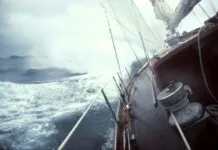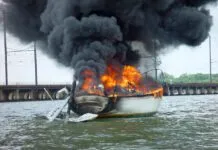Use zincs to protect against the galvanic currents that are set up by dissimilar metals on your boat that are immersed and that are in electrical contact with one another. The best example is your bronze propeller on a stainless steel shaft. The best protection is to put a zinc right on the shaft next to the propeller, or a zinc on the propeller nut. An isolated bronze through-hull doesn’t need protection because it is not in electrical contact with another immersed dissimilar metal. If electrically isolated, high quality marine bronze is electrochemically stable in seawater; nothing good can come from connecting wires to it.
Stainless steel is a special case. Generally, it is a bad idea to use stainless steel underwater, because it can pit. When it pits, the nobility of the metal changes locally, and you end up with tiny galvanic couples that are made up of different parts of the same piece of metal, and the pits grow deeper. One school of thought suggests that if you must use stainless steel underwater (e.g. you need its strength), then you should connect a nearby immersed zinc to it; this protects the stainless steel from itself, reducing the rate of pitting. The electrochemistry of this assertion is compelling enough that you ought to protect a stainless steel rudder shaft with a zinc. This may be done by mounting a zinc on the hull near the rudder shaft, and electrically connecting it (inside the hull) to the stainless rudder shaft. For the reasons described above, ensure that your metal rudder shaft is not electrically connected to anything else. Your stainless steel propeller shaft will be protected from itself by the same shaft zinc that protects the propeller from the stainless steel shaft. In both cases, the pits, if they appear, will appear where the stainless steel is not exposed to the water. Trouble areas are in the cutless bearing, inside the rudder bearing, and just inside the top of the rudder.
Keep your metal keel/ballast electrically isolated from all other bits of metal. If you have the misfortune to have an external iron or steel keel, however, mount a zinc directly on it to reduce the rate of corrosion.
For more information on installation of marine electrical systems, check out Marine Electrical Systems, Vol. 2: System Installation from Practical Sailor.








































